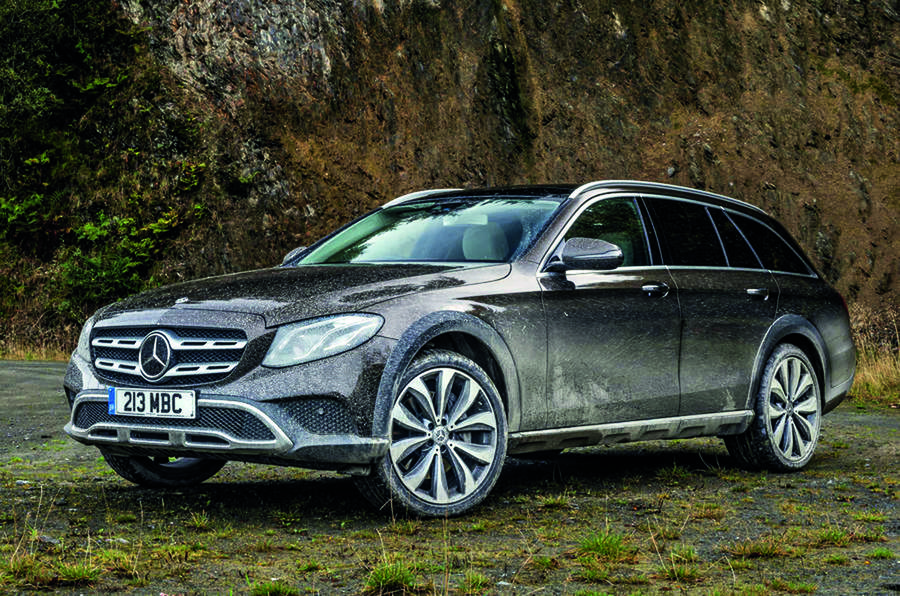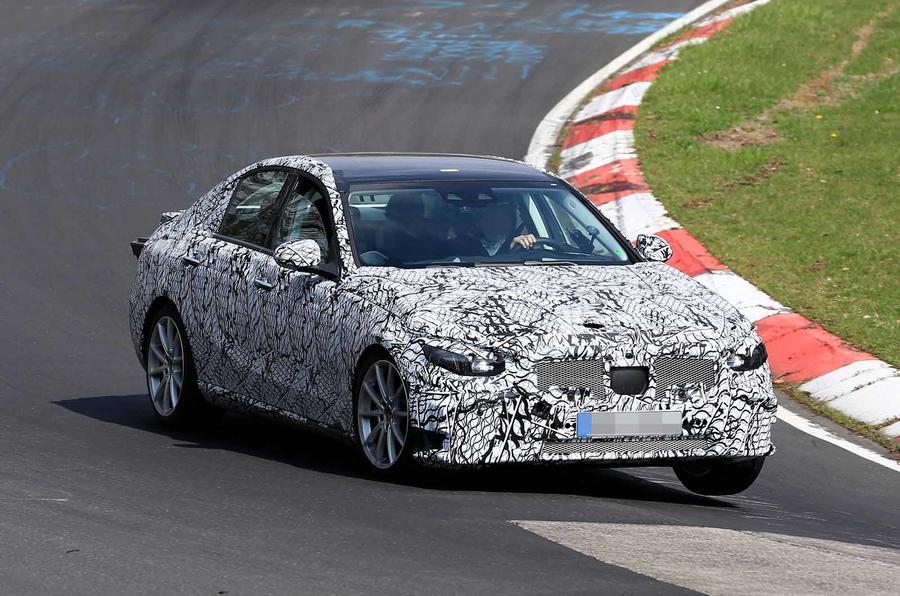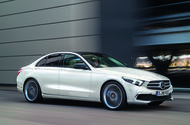New C-Class will take the fight to BMW and Audi with advanced autonomy and a luxurious interior
3 Series rival has been comprehensively redesigned to feature self-driving tech and electrified drivetrains
The next Mercedes-Benz C-Class has been redesigned from the ground up, with highly efficient new hybrid drivetrains and advanced autonomous driving technology set to be some of its key draws.
Having experienced a sharp drop in C-Class sales in recent years because of the universal gravitation of buyers towards SUVs, the German maker is providing the fifth-generation model with many of the developments being readied for the new S-Class. The new C-Class, codenamed W206, will challenge the recently facelifted Audi A4 and new BMW 3 Series when it arrives in UK showrooms in 2021.
As evidenced by the latest prototypes, the design of the new C-Class is a clear evolution of the styling seen on today’s model. Although its exterior features a new-look front end with more angular headlights, the new car’s proportions, dimensions and overall silhouette remain very close to those of the model it replaces.

New 2020 Mercedes-Benz C-Class hits the Nurburgring
The starting point for the new C-Class is Mercedes’ MRA (Modular Rear Architecture) platform. It offers a number of advances over the earlier version of the steel and aluminium structure. These include, according to insiders, more advanced electrical architecture that supports a 48V system, which is key to providing the 2021 model with a new range of plug-in hybrid drivetrains.
The MRA structure uses a double-wishbone front and multi-link rear suspension, with adaptive damping likely to be offered as standard across the range in most markets, including the UK. The new C-Class will continue to provide the option of rear air springs on selected models.
As well as being used by the C-Class saloon, estate, coupé and cabriolet, the new platform will underpin successor models to the GLC and GLC Coupé, with a choice of both rear-wheel drive and optional four-wheel drive.
New all-terrain model
As an addition to the existing line-up, Mercedes has given the green light to a new Audi A4 Allroad rival in the C-Class All Terrain model. Based on the standard estate, it will receive more rugged styling, with unique bumpers and wheel-arch cladding, increased ride height and beefed-up underbody protection measures already brought to the larger E-Class All Terrain.

The engine line-up for the fifth-generation C-Class will consist primarily of four-cylinder petrol and diesel engines featuring a choice of EQ Boost mild-hybrid and EQ Power plug-in hybrid functions in combination with either a starter/generator or gearbox-mounted electric motor.
New electric motor and battery technology should increase the efficiency of future hybrid drivetrains, although the plug-in C-Class is likely to continue to offer the 31-mile range of the current C300de at the start of sales.
Despite the focus on efficiency, Mercedes is also planning successor models to today’s C43 and C63. The C43’s 3.0-litre inline six-cylinder petrol engine will adopt mild-hybrid tech, but the C63 is set to continue with an updated version of today’s 4.0-litre V8 petrol engine, with up to 550bhp in a new range-topping C63 S 4Matic+. That will use a fully variable four-wheel-drive system rather than today’s rear-driven set-up.
In a bid to make the new C-Class the most advanced car in its class, Mercedes will bring in the very latest autonomous driving features to set what one source involved in its development has described to Autocar as “new standards in human-machine interface in the automotive field”.

Leading the push is a new Drive Pilot function with level three functionality. Due to make its debut on the seventh-generation S-Class in 2020, it will allow hands-off driving at speeds of up to 80mph for extended distances.
This brings a whole new range of sensor functions, including long-range lidar, multi-mode radar, the latest ultra-sonic sensors and a new stereo camera from Korean supplier LG.
It also provides the basis for a new level four automated valet parking function developed by Mercedes in partnership with Bosch. It allows the new C-Class to negotiate parking garages and manoeuvre into free parking spaces – all via a smartphone app interface.

Advanced adaptive cruise control will allow the C-Class to follow the car ahead at speeds of up to 130mph, slowing down automatically when speed limits change. It will also support the usual active lane change, lane keeping, emergency stop and brake assist with cross-traffic functions.
To make the most of these functions, the C-Class’s new interior will be inspired by the earlier Concept EQ. It will feature large digital displays incorporating both the instruments and infotainment functions as well as new touch-based controls in a less bulky dashboard. This will also provide a greater feeling of interior space, it is claimed.
Read more
2020 Mercedes S-Class: first interior shots reveal tech revolution
Mercedes-Benz reveals “world’s first” autonomous valet parking system
Mercedes-Benz to launch EQE electric saloon in 2022
Source: Autocar
